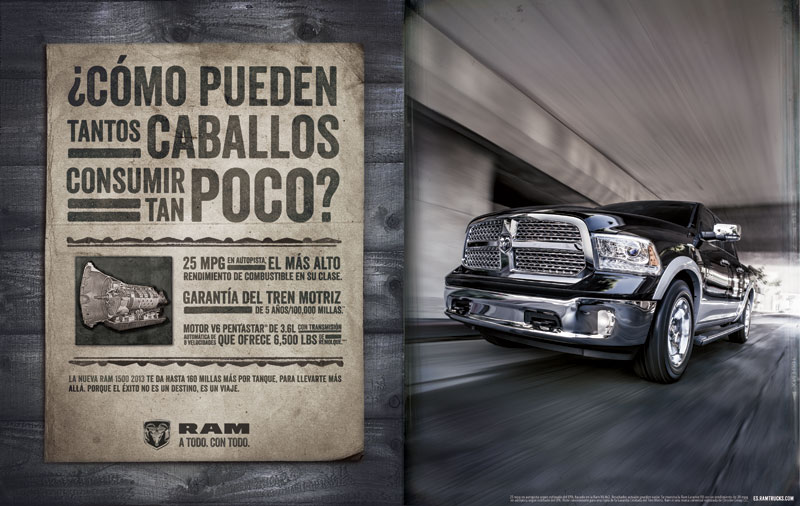Hispanic Auto Advertising Picks Up Speed
Hispanics represent the largest, youngest and fastest-growing U.S. minority, says Paul Sellers of Univision.

In wooing Hispanic car buyers, mistakes have been made.
Dealer Brian Benstock tells of a dealership running Spanish-language ads for Spanish-speaking Hispanics. The campaign drew in some customers.
“They were handed English-only purchase contracts to read and sign,” says Benstock, general manager of Paragon Auto Group based in Queens, NY. “It’s amazing when things like that happen.”
“You’ll probably make mistakes; I know we did,” Trina Barta, director-media operations for General Motors, says of earlier Hispanic marketing efforts. “But you’ve got to stick with it.”
Hispanics represent the largest, youngest and fastest-growing U.S. minority, says Paul Sellers, vice president-automotive at Univision Communications, a Spanish-language U.S. media company. “Think about that as a marketer.”
Marketers have thought about it.
Major auto makers have cranked up advertising to reach the ethnic group that purchased 10% of the vehicles sold in the U.S. in 2011 and is expected to make up 20% of the nation’s population by 2020, up from 17% or 52 million now.
Advertising aimed specifically at Hispanics is not new for some auto makers.
“Our company had the foresight to get into Hispanic marketing 20 years ago,” Tom Peyton, an American Honda ad executive, says in Las Vegas at a recent J.D. Power and Associates automotive conference session entitled “Top Marketers’ Insights on Winning with Hispanics.”
It’s wrong to regard Hispanics as a big homogeneous group, panelists say. Most Hispanics in the U.S. are of Mexican descent. But Cuban-Americans are a cultural force of their own. Then there are Hispanics from South and Central America with their own social identities.
Thinking of all Hispanics as one unified culture is like regarding all English-speaking people, from Americans to Australians, as nationally the same.
Marketers also draw distinctions between Hispanics who immigrated to the U.S. and those born here.
“We see opportunities in the Hispanic market to reach Generation Y, who unlike their parents probably are U.S.-born and don’t necessarily buy what their parents do,” Peyton says.
Nor do the different generations watch the same TV channels, says Sean Wolfington, owner of Tier 10 Marketing and Auto Amigo. “A third-generation Hispanic-American probably isn’t watching Spanish-language television.”
Depending on circumstances and the targeted audience, Hispanic-oriented broadcast ads are in Spanish, English, Spanish with English subtitles and vice versa. Dubbing sometimes is used, but less often than before.
“Language choice depends on the message and the market,” Barta says. “For example, Chevy has a general-market ad in which the people speak Spanish.”
GM and other auto makers often partner with Hispanic-run ad agencies to make sure marketing resonates with the target audience.
If Spanish is the language of choice for an ad, the issue becomes which accent works best from a broadcasting standpoint.
“Some Spanish accents are more acceptable or neutral, just like English,” Wolfington says.
Sellers adds, “You get a Southern California group saying, ‘We need to use this dialect’ and a South Florida group saying, ‘Use this one.’”
The right vernacular is important for regional advertising, he says, making an English-language comparison: “If you say, ‘Son, this dog won’t hunt,’ it works in Mississippi, but not in Brooklyn.”
Chrysler’s launch of the new Ram pickup includes a “full-blown ad campaign in Spanish and English aimed at Hispanic customers,” Ram brand chief Fred Diaz tells WardsAuto at a media event for the vehicle.
“We didn’t do the old create a spot in English and just dub over it in Spanish,” he says, calling the campaign part of Ram’s “huge effort to go after the Hispanic customer.”
The average Hispanic new-vehicle buyer spends $27,000 on the transaction compared with a U.S. average of $28,600, belying a misconception that Hispanics buy cheap cars, Sellers says.
“There is a lot of misconception, slash, prejudice, that Hispanics don’t have the money to buy a luxury car,” Benstock says.
Marketers are feeling their way around digital advertising for Hispanic consumers.
“It’s a new frontier, with not many dealers using Spanish-language SEO and SEM,” Benstock says, referring to search-engine optimization and search-engine marketing.
“From a digital standpoint, it is an underserved community,” Wolfington says.
Barta agrees. “Not a lot of the digital community is focused on this group, especially the younger market.”
Going after Hispanic customers requires a full commitment, Benstock says. “Either you’re in it or you’re not. Showrooms should be a reflection of the communities they serve.”
That means hiring bi-lingual Hispanic employees and maintaining Spanish-language websites, he says. “From an economic standpoint, it makes a lot of sense to go after this customer.”
Conference panel members cite general shopping habits of Hispanics. They dislike being rushed, Wolfington says. They tend to make family rather than individual decisions when buying a car, Sellers says. Many Hispanics feel uncomfortable in a dealership finance and insurance office, he adds.
But that might be more universal than cultural. “F&I can be uncomfortable for anyone,” Benstock says.
About the Author
You May Also Like

